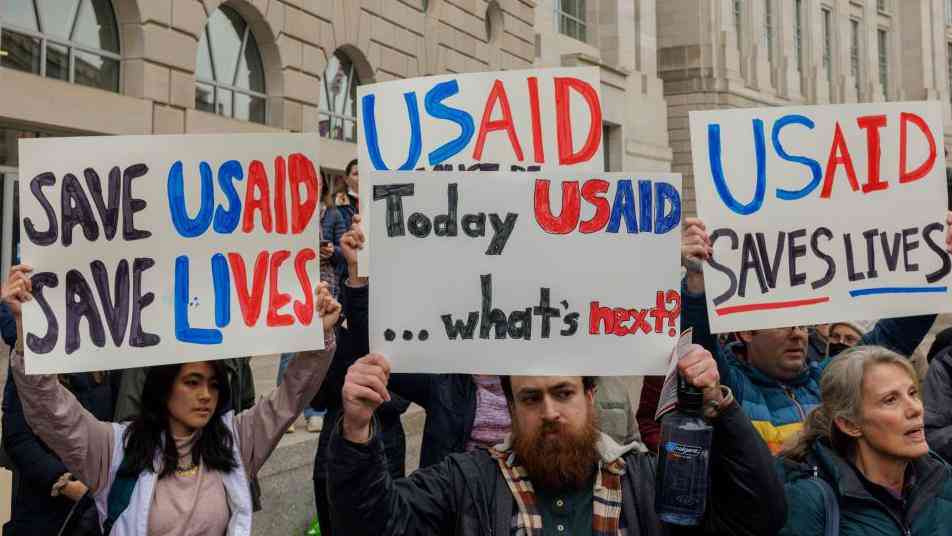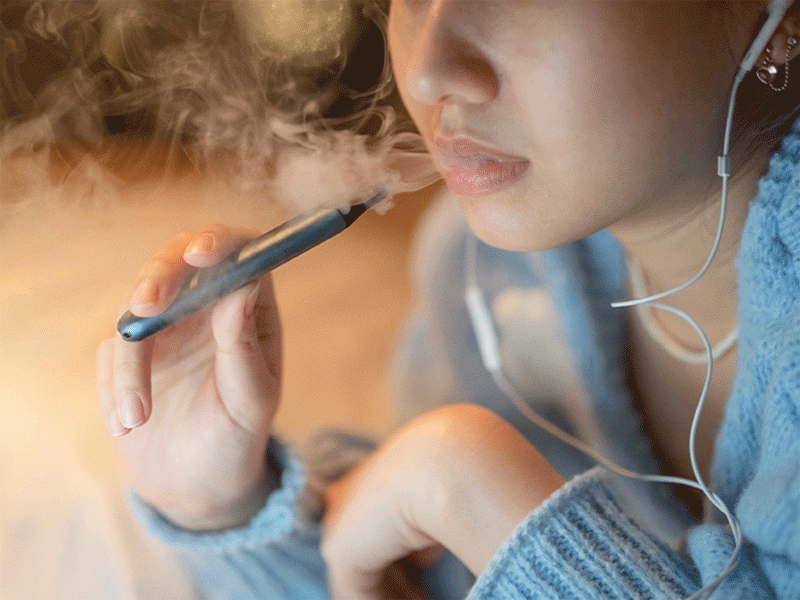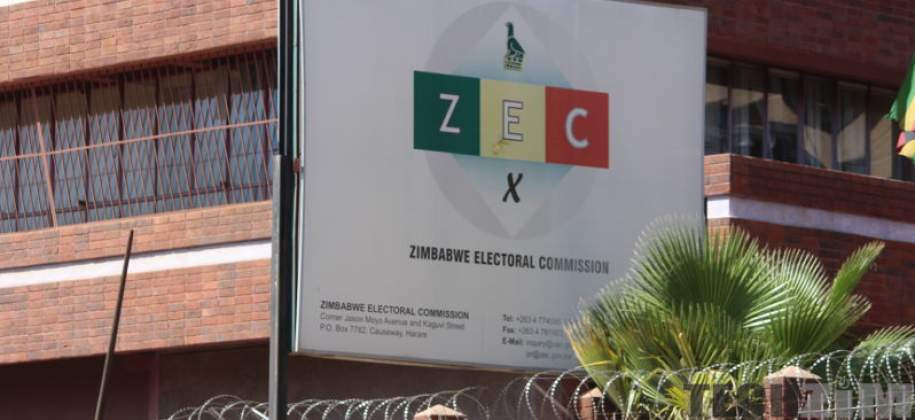
DONALD Trump wants to rule the world by fear. He has made this very clear.
Corrupted by absolute power, in less than a month he has deployed weapons of mass fear to intimidate the Mexicans, Canadians, Colombians, Panamanians, Danes and now us, the South Africans.
After all, we are the ones who took Israel to The Hague, and won! We are the ones proving that black leadership can work.
Not hard to imagine him thinking: “I mean, what right does a ‘shithole’ like that have to upset our white world that I’m here to save!”
Those who defend Trump argue that he has a right to put America First. This is not a return to isolationism as some have argued; this is global rule by fear without the benefits of hypocrisy.
The velvet glove is now finally off, and now we all — not just in the Global South – face the iron fist head-on that we all knew was always there.
We South Africans have played in the hypocrisy theme park brilliantly because it suited us. But the old rule book no longer applies.
The polite pleasantries of pre-Trump diplomacy are gone. Hosting the ‘G19’ is going to be interesting. Who, if anyone, will stand up first against the bully in the playground?
- Patent rights — reap more benefits, profits
- Letter from America: Is former president Donald Trump a hero or villain?
- Chidzivo, Tarakinyu clinch Kabag honours
- The Fiddler: The body politic
Keep Reading
What we need to realise is that Trump had already declared war on USAid before South Africa was in his crosshairs – for a man who invents the facts that suit him, he was adamant that what he perceived to be a den of iniquitous lefties whose wokeism was used as a cover for grand corruption and global anti-Americanism needed to be shut down. It would have happened anyway.
And so, why us? How did we get caught up in this mess?
When it came to justifying the shutting down of USAid operations in South Africa (that benefit, of course, mainly black South Africans), there was a unique twist to the story: South Africa’s white right wing has for years cultivated links with the Maga movement in the US, links we at the Centre for Sustainability Transitions have carefully tracked via network mapping of inter-connected social media accounts.
So, when it became clear that Trump was going to win the election, they took advantage of these links and positioned themselves to drop the sound bites that the Maga movement loves to hear.
The same sound bites that they knew would activate the grand master of racist bile whose explicit mission is to save the dying white civilisation.
This is the global equivalent of Custer’s Last Stand. South Africa’s white right was there to hand him the ammunition he needed.
And so, hey, why not connect the dots: justify a decision that had already been made by blaming the black government of South Africa for doing what everyone knows isn’t happening, namely forcibly expropriating the land of white Afrikaner farmers.
Even AgriSA, which represents the farmers, issued a statement to say it is not happening. But this tells us a lot about the Maga mindset: because it is assumed that it is a black government persecuting white Afrikaners, the punishment is to counter-persecute the poorest and most vulnerable black people by cutting off the aid they depend on.
This only makes sense if you think “all whites are being persecuted by all blacks” – it is the same as “all Muslims hate all Jews”. Only you “woke” people will deny this.
And that, of course, is why the government is expropriating the land of white Afrikaners — those blacks who think they can rule need to be taught a lesson. This is a perfect stanza on the Maga hymn sheet.
Anything that goes up against the political correctness of wokeism is grist to the Maga mill. But if this leads to the exclusion of South Africa from Agoa, some of the biggest losers will be the very people the white right claims to represent — the white farmers.
That is what happens, Kallie, when you give a live grenade to a lunatic — he might just throw it.
There is, however, an inconvenient problem with the narrative: it is empirically wrong. But who cares, those are just facts. We South Africans should care, because truth is a key element of our defence.
To start with, this is not just about alleged expropriation of Afrikaner land (that, by the way, once belonged to the indigenous populations).
It is about defending white privilege in general and unmitigated opposition to BEE and redress of past wrongs.
As I will show below, white people have got a lot wealthier since 1994 — just read Pieter du Toit’s book about the Stellenbosch Mafia. How is that possible if you assume they must be a persecuted minority in a black-ruled country?
Inequality explained
In recent years, South African academics have revolutionised our understanding of inequality. During the founding decade of our democracy, the only measurement of inequality available was the Gini coefficient, which is in simple terms a measurement of income inequality.
Researchers in recent years have developed methods to calculate not just the incomes of South Africans, but also their assets — in other words, their wealth.
Using newly-acquired data and these methods, it is now possible to calculate what South Africans own, how much money they save and invest, what they stash away in family trusts, and how much money they owe to those who lend them money.
Wealth, therefore, is your assets (eg your house, car, savings) minus your liabilities (eg debts, taxes, etc). If your assets are growing faster than your liabilities you are getting wealthier. If you have no assets and only liabilities, you are poor and getting poorer.
Much of this detailed quantitative research was synthesised in a United Nations University Working Paper titled Estimating the distribution of household wealth in South Africa by Aroop Chatterjee, Leo Czajka and Amory Gethin, published in 2020.
By integrating vast amounts of data from several sources, these researchers could demonstrate empirically the distribution of South Africa’s personal wealth for the year 2017.
From the useful summary of their results, it is clear that the bottom 90% of all adults (31,8 million people) account for 14,4% of all wealth, whereas 0,1% (35 400 individuals) account for 29,8% of all wealth.
In other words, the wealth of the richest 35 400 individuals is equal to twice the wealth of the bottom 90% of the entire adult population.
Furthermore, the bottom 50% are getting poorer — their liabilities are greater than their assets, which is why their wealth is minus 2,5%. The middle class is small, comprising 14,1 million adults whose wealth share is only 16,9%.
The richest people earn 6 000 times more than the average income of the bottom 90%.
As far as the different asset classes are concerned, South Africa’s personal wealth is mainly in bonds & stocks (34,6% of total assets), pensions/life insurance (32,5%) and housing (28,8%).
However, the distribution of these assets is highly unequal — 62,7% of all bonds and stocks are in the hands of 0,01%, ie 3 540 individuals while 99,8% of bonds and stocks are in the hands of 10% of the population.
The primary asset of the bottom 50% is their houses. Business assets are most important for the middle 40% (including the commercial farmers, most of whom are still white), most of which are small to medium-sized formal businesses that, according to TIPS, collectively employ more people (about six million) than the large corporates (around four million).
Unsurprisingly, most of the poorest 50% are black. The most significant change since 1994 is the deracialisation of the middle class (middle 40%), which by 2014 was 50% black and therefore by now it is most likely higher than that.
The large bulk of the elite (i.e. top 10%) remains white, although that proportion has gradually been reducing — it was down to 60% by 2014. However, the majority of the top 1% remains white, and much of their wealth ends up in family trusts.
Since 1994, large quantities of assets have been moved into trusts, many registered offshore to avoid tax. By 2018, there were 93 000 trusts. Finally, from a comparative perspective, the wealth share of the top 1% in South Africa has since 1994 been consistently higher compared with Russia, the United States, India, China, France and the United Kingdom (see Figure 1).
Put differently, if you are rich in South Africa it means you are more than likely to be white and you will have a bigger share of the total pie than if you lived in any of these other countries.
Defending white wealth
The prospective US ambassador to South Africa, South African-born right-winger Joel Pollak, has railed against South Africa’s “race-based policies” such as BEE and the Expropriation Act that he says could lead to Zimbabwe-style land seizures.
Taking the sound bites delivered by the South African white right, his job is to reproduce the myth of white persecution.
None of this extreme alarmism can be reconciled with the fact that South Africa’s various legitimate policies to redress the injustices of the past have not resulted in violent actions to redistribute white wealth.
On the contrary, white wealth accumulation has been allowed to flourish as the above figures reveal.
Indeed, without democratisation in 1994 and the subsequent ending of sanctions, many white-owned businesses would not have been able to expand internationally, nor would they have been able to source foreign investors in their businesses.
From a profoundly racist and patriarchal perspective, a commitment to BEE and diversity is irreconcilable with meritocracy. But who defines what this meritocracy looks like?
It has been proven time and time again, if white men are left to their own devices they hire people who look like them and defend their decisions with reference to merit. The end result is an intellectual monoculture that is incapable of dealing with an increasingly diverse world. I have always tried to select staff and students in ways that ensure a diversity of genders, race and disciplines because a socially diverse organisational ecosystem is far more effective, agile, challenging and innovative than an ecosystem comprising a single species. This is a true meritocracy.
But for the Maga movement, this is mere wokeness and therefore anti-meritocratic. What they do not realise is that their war against “DEI” will result in the return of white male monocultures that will seriously weaken their institutions over time. Innovation dies with DEI (diversity, equity and inclusion).
The resistance
Finally, let me end with a different lens on the wealth inequalities discussed above. It is bitterly ironic and deeply troubling that to reject the bigoted fictions peddled by Trump, Musk and Pollak, I am forced to insist that little has changed for white people.
In a different universe where the moral compass is the United Nations Charter, the Sustainable Development Goals and our own constitution and National Development Plan, white privilege is a key part (but not the only part) of the problem of worsening inequalities.
Indeed, within this universe, too little has been done about this, and not — as in the Maga Universe that the South African white right is part of — too much.
Where we have landed up is nothing to be proud of. And so, I think this notion of two parallel universes drags our little country with all its struggles, setbacks and wonderful achievements, into a much greater global struggle to define a future for humanity during a time of great turmoil and transformation.
It is not only about climate change, the artificial intelligence (AI) revolution, pandemics, geopolitical tensions, cyber security and resource depletion as the world population grows, it is also about the end of the middle class and the political ramifications.
Joel Kotkin’s great book titled The Coming of Neo-Feudalism: A Warning to the Global Middle Class (Encounter Books, 2020) documents in great detail how across almost all countries in the Global South and North the inequalities are widening as techno-capitalism replaces the old liberal democratic order.
Power has shifted from democratic institutions that were carefully built over the decades since World War 2 to the new techno-oligarchs and their gigantic machines of global distraction.
With every click, we now work free for the largest and wealthiest corporations in modern history — hence the title of the book by Yanis Varoufakis, Technofeudalism: What Killed Capitalism.
More and more countries look like South Africa as the super-rich get richer, the middle class weakens and shrinks, and the grinding relentless suffering of the poor gets worse.
The result is increasing uncertainty, a sense of fragility and outright desperation as middle-class people realise that for the first time, their children are unlikely to have a better life than they themselves have now.
Under those circumstances, the future for them looks bleak and that is what fuels the global shift to the right as authoritarian populists are elected by exploiting this sense of hopelessness.
They promise certainty, restoration of a glorious past, a strong man to deal with enemies within and without and (mainly in the West) the resurrection of an era when white men ran a world fuelled by oil and coal while everybody else was docile enough to know their place.
And so we have parallel universes: One is about the angry pushing back against wokeism and science to resurrect a glorious past by restoring the unipower of a US-led “West” where “might is right”; and the other is about embracing the dynamics of a multipolar world where certainty and security lies in collaboration, partnership, multilateralism, diversity and a recommitment to a more equal, less white and more sustainable world.
If I am right, then the bombastic stupidity, bigoted arrogance and spluttering frippery will get worse as the barrage of executive orders fail to really hold back the forces that are driving forward this new world.
But it will get dangerous in some parts of the world. Violence will be deployed in one form or another to enforce “America First”.
Undoubtedly, “black ops” will be unleashed against enemies in the dead of night.
In a highly-charged environment, triggers can set off chain reactions. And because the corpse of Western democratic values lies abandoned on the killing fields of Gaza, anything goes within the ethical vacuum left behind. That nightmare now morphs into Trump’s dream to build a Dubai on the graveyard. And the Proud Boys who led the January 6 Insurrection in 2021 are back on the streets.
Much will depend on how progressive forces within the US figure out ways to respond.
Will the “blitzkrieg” succeed in demobilising them? Will the calculated use of force to instigate anomie and mobilise the Maga movement create a sufficient level of fear to prevent people from rising against injustice?
Or will a sufficient number of people become so outraged they overcome their fear to join hands and create a movement strong enough to not only counter Trumpism, but also the retaliatory viciousness of the Maga movement, the Christian churches who ordain their actions and their public threats that can so easily be weaponised via social media.
Martin Luther King’s famous “I have a dream” speech in 1963 at the Lincoln Memorial in front of a crowd of 250 000 people comes to mind.
And this time, will we from the Global South be marching with them? Can progressive forces within the US share a “Humanity First” dream with those of us from the global South who fought so hard for a sustainable, inclusive and just world? And how quickly can this happen? Time is running out.
- Swilling is a co-director at Centre for Sustainability Transitions, Stellenbosch University











